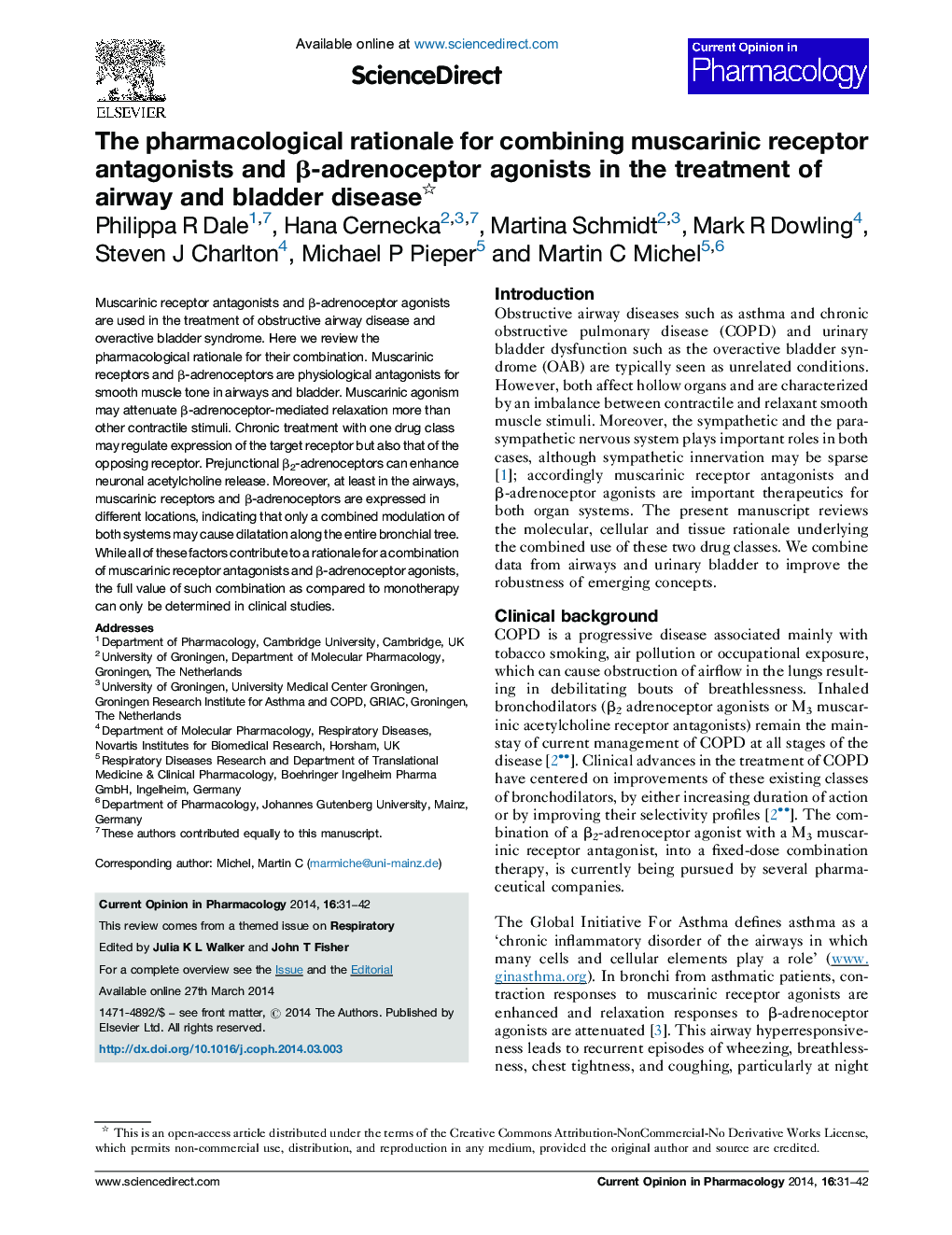| Article ID | Journal | Published Year | Pages | File Type |
|---|---|---|---|---|
| 5825993 | Current Opinion in Pharmacology | 2014 | 12 Pages |
â¢Muscarinic receptors increase smooth muscle tone in airways and urinary bladder.â¢Î²-Adrenoceptors relax smooth muscle tone and oppose muscarinic contraction.â¢Opposition involves transmitter release, signal transduction and receptor expression.â¢This supports the combined use of muscarinic antagonists and β-adrenoceptor agonists.
Muscarinic receptor antagonists and β-adrenoceptor agonists are used in the treatment of obstructive airway disease and overactive bladder syndrome. Here we review the pharmacological rationale for their combination. Muscarinic receptors and β-adrenoceptors are physiological antagonists for smooth muscle tone in airways and bladder. Muscarinic agonism may attenuate β-adrenoceptor-mediated relaxation more than other contractile stimuli. Chronic treatment with one drug class may regulate expression of the target receptor but also that of the opposing receptor. Prejunctional β2-adrenoceptors can enhance neuronal acetylcholine release. Moreover, at least in the airways, muscarinic receptors and β-adrenoceptors are expressed in different locations, indicating that only a combined modulation of both systems may cause dilatation along the entire bronchial tree. While all of these factors contribute to a rationale for a combination of muscarinic receptor antagonists and β-adrenoceptor agonists, the full value of such combination as compared to monotherapy can only be determined in clinical studies.
